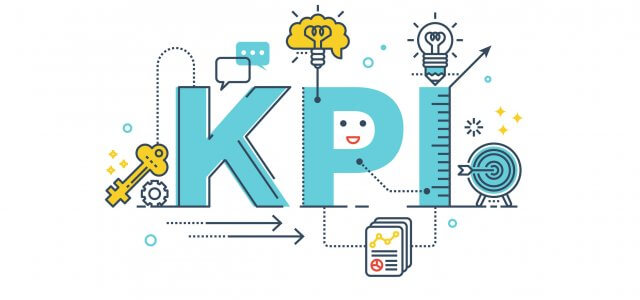4 Ways Smart Marketing Professionals Use Social Listening to Save Time (#3 Especially!)
The typical modern-day marketing professional has a bottomless list of items on his (or her) agenda. Time is a rare commodity and innovation and creativity often take a backseat to tedious and never-ending tasks.
Sound familiar? (And this is especially true for small or mid-size companies.)
Each day brings with it a new deadline, making it impossible to set aside any time where you can just focus on research and analysis. The struggle is real.
How are top marketing professionals and marketing teams so productive? How do they find time to 1) do extensive research and analysis 2) learn new skills and techniques 3) achieve impressive results?
Social listening
By automating tasks that social listening tools can handle and spending the time that they save wisely, smart marketing teams are able to increase their efficiency and effectiveness for a whole new level of productivity.
What exactly is social listening? The concept is fairly simple:
Social listening is the practice of monitoring on-line conversations to gather and access useful information.
The information you collect can be used in a ridiculous number of ways, which is what makes social listening so valuable.
Different social listening tools do come with different features, but the goal is to provide marketing teams with information so they can achieve results.
By using social listening tools to access relevant information instead of digging for it personally or hiring interns (yes, there are companies that actually hire interns to do what social listening tools are designed to do), smart marketing teams are able to save themselves a lot of time and resources.
This leaves them free to focus on other activities that will truly add value to their work and produce results.
Here are a few smart ways that savvy marketing professionals use social listening to save time:
1. Social listening for market research

You might have a great product, but that doesn’t matter much if you don’t do market research and find out who your target audience is.
Using social listening for market research should be the first step that any marketing team takes.
What to track: keywords and phrases related to your product or business. For example, if your company produces energy-efficient light bulbs, monitor mentions of ‘LED’, ‘CFL’, ‘energy-efficient lighting’, or ‘energy-efficient light bulbs’, etc.
By tracking these keywords, you’ll discover important details about your target audience, including their general age range, gender, the form of language they use to communicate, what their interests are, and what they consider to be important when it comes to products like yours.
Gathering all of this information will help you figure out the best way to market your product to your target audience.
2. Social listening for ad and content distribution
After conducting market research, marketing teams also love using social listening tools to find channels for ad and content distribution. Tracking the right keywords tells them where to find potential clients.
Identifying websites that are popular among their potential clients allows marketing professionals to effectively create ads and distribute content that will reach their target audience. It also ensures visibility on the very platforms that their potential clients commonly frequent.
What to track: keywords and phrases related to your industry and product, especially keywords that you want to target in your ads and content.
This may sound synonymous with what you’d track for market research, but it’s just a matter of perspective and context. In fact, you’ll often be able to extract different types of information from the same keywords. This is a time saver in itself: set up social listening projects for a few keywords and collect data that you can use in a number of ways.
3. Social listening for generating leads
Social listening isn’t just for gathering and accessing information. Another major aspect is lead generation. Marketing professionals often use social listening to find potential customers.
(Check out the replies to this Tweet and see how many leads a company producing t-shirts was able to generate just by responding to a potential customer.)
What to track: besides keywords related to your industry, phrases like ‘where can I find’ and ‘looking for recommendations’ are key. You might think this seems a bit generic and would end up revealing mentions like ‘where can I find an energy-efficient light bulb?‘ instead of ‘where can I find this shirt‘. And you’re probably right.
That’s why using filters or required keywords is so important. Smart social listening tools like Brand24 will let you monitor a phrase like ‘where can I find’ together with required keywords such as ‘shirt‘.
See how ‘shirt‘ appears before the phrase ‘where can I find’ in the Tweet above? The company producing t-shirts wouldn’t have found this mention if they’d just tracked ‘where can I find this shirt?’. Using required keywords together with keywords (basic) makes sure that mentions like this will be collected.
So you don’t have to worry about turning up results on energy-efficient light bulbs.
4. Social listening for customer engagement
After you’ve turned your leads into conversions, another way that marketing professionals often use social listening is to find opportunities to engage and interact with their new customers.
Sometimes you’re going to have happy customers. Really happy. So happy that they’ll recommend your product to others. Don’t you think they at least deserve a ‘thank you’?
The producer of this headache balm didn’t hesitate to thank this happy customer for her recommendation.
In fact, they were so flattered by her kind words that they republished her Instagram post on their Facebook page… which lead to customer inquiries, new leads, and further engagement, amounting to over 400 comments! (See FB post below)
Other times, you’re going to have unhappy customers. Really unhappy. So unhappy that they’ll publicly recommend that people don’t buy your product. Don’t you want to know why? And try to rectify the situation?
What to track: to find opportunities to engage with your customers, track your brand name. Don’t forget about variations or nicknames. For example, Chevrolet is otherwise known as Chevy. Mac is used interchangeably with Apple. And Walmart is often referred to as Wally-Mart (Wall-E Mart?).
Track them all. Find out if your customers (or your competitors!) are talking smack about your brand. Or if they’re talking you up! Read the situation and engage accordingly.
Social listening saves time
There are many more ways to use the information that you gather from social listening, but even if you start with just 1 of the 4 on this list, you’ll still save yourself a considerable amount of time.
Use it wisely.
Instead of spending all your time searching for information or data and then be left with insufficient time to analyze it, do what smart marketing professionals do:
Use a social listening tool to gather the information you need, and spend the time that you’ll save on tasks that will truly add value to your work and produce results. (P.S. research and analysis – the most valuable tool you have is your brain!)
A smarter social listening tool, like Brand24, will make this even easier by providing filters and analysis reports so you can dive as deep into your data as time will allow. Which is guaranteed to be more than you began with.
Try social listening and spend your time on things that truly matter. Just sign up here for a free trial and set up your social listening projects now.





![What is Brand Awareness? Guide & 9 Powerful Tactics to Build It [2022]](https://brand24.com/blog/wp-content/uploads/2020/12/15-The-ultimate-guide-to-brand-awareness-1400x660x2-640x300.png)

